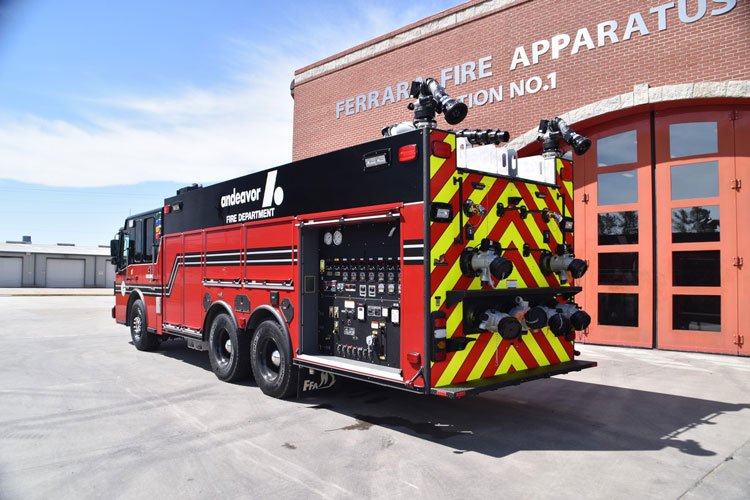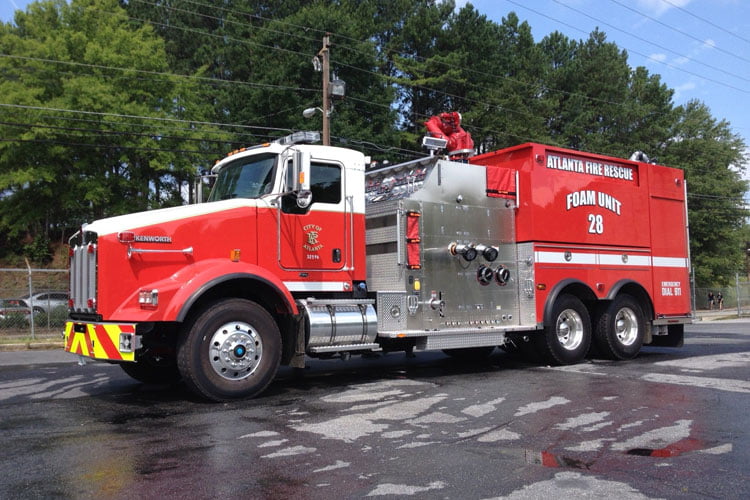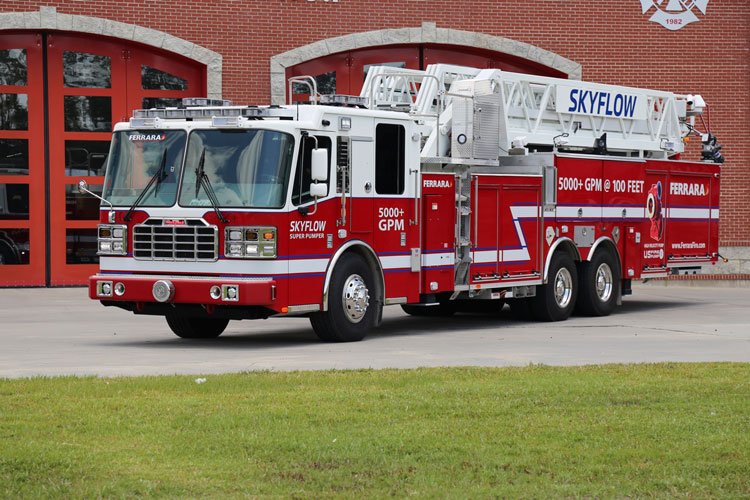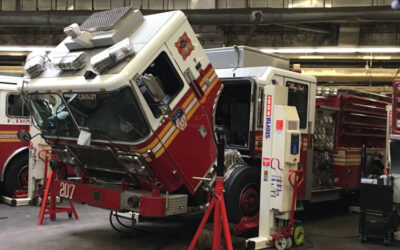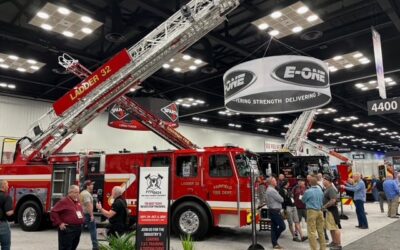The design of industrial fire apparatus usually centers around one main attribute, that of putting maximum amounts of water through the rig to protect industrial facilities such as refineries, chemical plants, and other large manufacturing structures. Depending on the fire department or industrial fire brigade and their water flow needs for specific facilities, industrial fire rigs can run from large to supersized pumpers.
Every plant has its own unique hazards. That means different chemicals processes, terrain, and exposures, which can compound the issues surrounding a fire department’s response. So, when problems occur in such a facility, the fire department needs a heavy duty industrial vehicle that can respond quickly and perform reliably.
At one end of the spectrum, one might find 3,000-gallon-per-minute (gpm) to 4,000-gpm fire pumps on custom chassis pumpers such as those built by E-ONE that discharge water or a foam solution through a center-mounted monitor like the Ambassador 2×6 monitor made by Williams Fire & Hazard Control, which flows from 2,000 to 6,000 gpm. Williams Fire & Hazard Control also provides the Williams HotShot II 300 foam system. There are a couple of 2,000-gpm monitors at the rear of the rig, like those made by Task Force Tips, Akron Brass, or Elkhart Brass. All three monitors are RC remote-controlled.
Some fire agencies prefer commercial chassis industrial pumpers, usually built on International or Freightliner chassis and cabs, with pumps ranging from 3,000 gpm and up and typically carrying one centrally mounted large monitor and two rear-mounted smaller monitors.
Some industrial facilities such as power plants have ultra-special needs that require specialty pumpers to handle emergency situations. Specialty engines like those developed by KME have 1,500-gpm or larger pumps with around-the-pump foam systems, as well as a minimum of 500 pounds of dry chemical that can be used to safely suppress fires in and around energized gear. KME’s specialty power plant pumpers often are equipped with cab-controlled Forward Looking Infrared (FLIR) camera systems to pinpoint the location of any heat sources, allowing the pumper to apply agent precisely where it is needed.
Foam tenders (tankers) also can be found in fire department fleets that protect industrial facilities as well as in industrial fire brigade fleets. Typical of the foam tender type are two foam tenders the City of Atlanta (GA) had KME build. The foam tenders are on Kenworth T800 chassis with room for two in the cab and carry 2,000 gallons of foam, a Hale 8FG 3,000-gpm single-stage top-mount pump, and a FoamPro AccuMax 3150 foam system. Each Atlanta rig has individual foam controllers for each of its seven discharges, a 5,000-gpm Akron Brass 3580 Renegade monitor, and a 2,000-gpm Task Force Tips Monsoon RC remote-controlled monitor.
Along with manufacturing industrial apparatus with pumping capacity of 2000 to 4000 gpm, at the top of the industrial fire pumper hierarchy today is the Inundator Super Pumper made by Ferrara Fire Apparatus. The Inundator Super Pumper recently was confirmed by Underwriters Laboratories (UL) of a flow capability of 6,256 gpm from draft at a discharge pressure of 125 pounds per square inch. The Inundator has a HPV6000 high-velocity pump made by U.S. Fire Pump and can carry up to a 3,000-gallon water tank. The primary foam system for each Super Pumper is the FoamPro AccuMax 3300 foam injection system and can flow water or foam through either a Williams Ambassador II 8,000-gpm monitor or a Task Force Tips Tsunami 8,000-gpm monitor and dual 2,000-gpm Akron StreamMaster II, Task Force Tips Monsoon, or Elkhart Brass Scorpion EXM monitors.
On the aerial side of industrial apparatus, KME was the first apparatus builder to product a 102-foot aerial platform capable of flowing 3,000 gpm through the waterway at full elevation, making it a useful tool in many industrial situations. Ferrara also makes a 102-foot platform that has no restrictions on aerial or monitor movement or placement while flowing 2,000 gpm. Ferrara also offers a 102-foot Rear Mount Platform configuration with the capability to flow 3,000 gpm for those customers requiring a high-flow device with rescue capability.
E-ONE makes the HP 100 industrial platform, featuring criss-cross, underslung outriggers with a narrow 15-foot 6-inch spread that deploy in less than 45 seconds and require less room to set up than “H”-style jacks. Its three-section aluminum aerial provides a 100-foot vertical reach and a 91-foot, 6-inch horizontal reach while offering a 2.5 to 1 structural safety factor, exceeding the minimum National Fire Protection Association requirements of 2 to 1. The HP 100 carries a standard single monitor but can be fitted with optional dual monitors with up to 2,500-gpm flow.
Ferrara Fire Apparatus, with its SkyFlow high-flow aerial device, offers a mid-mount 100-foot aerial ladder capable of flowing an incredible 5,000 gpm through an Elkhart Brass Magnum EXM monitor teamed with a U.S. Fire Pump HPV5250 series pump in a rear-mount operator’s panel configuration.
ALAN M. PETRILLO is a Tucson, Arizona-based journalist, the author of three novels and five nonfiction books, and a member of the Fire Apparatus & Emergency Equipment editorial advisory board. He served 22 years with the Verdoy (NY) Fire Department, including in the position of chief.



